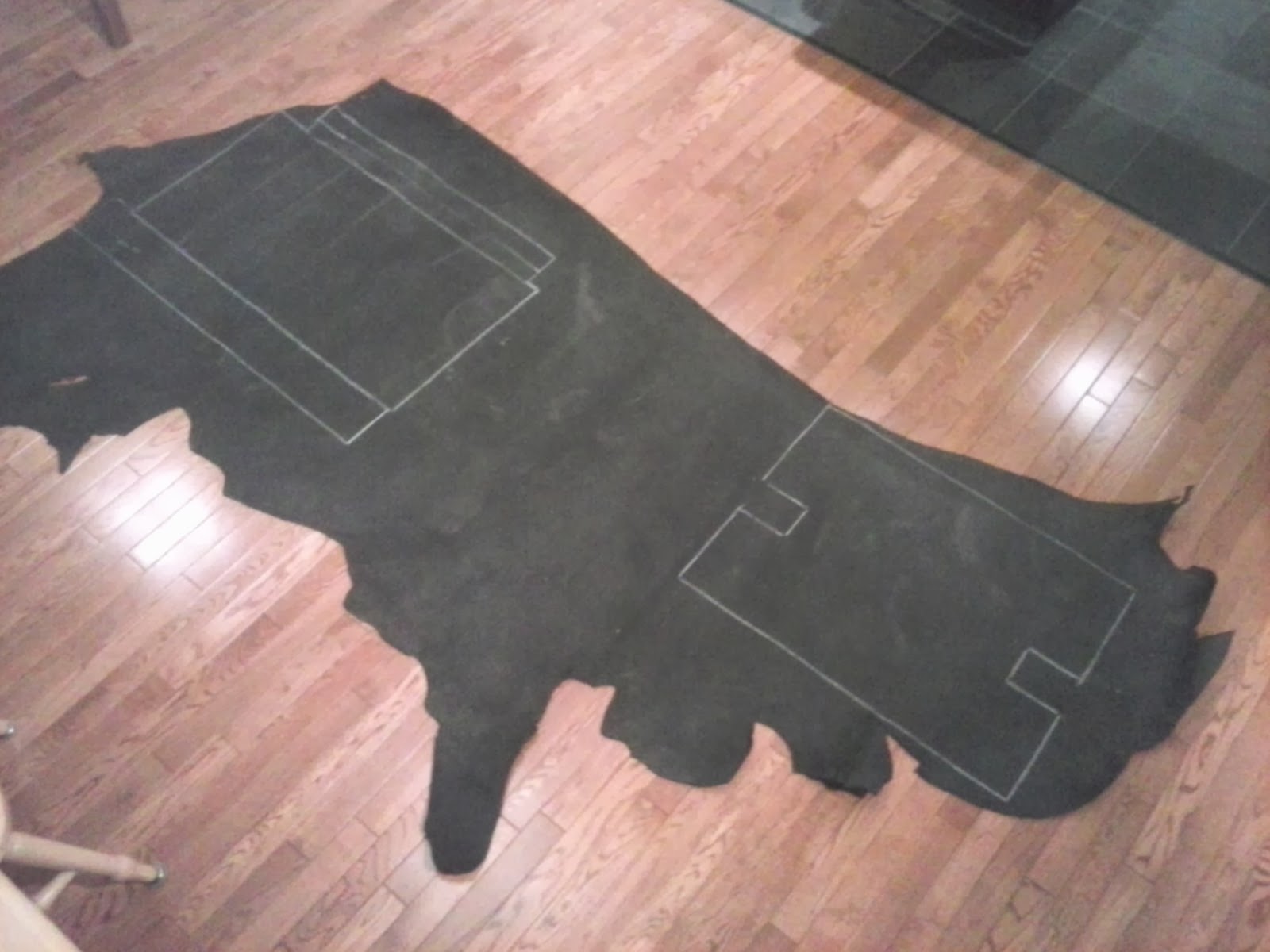About 4 years ago I was in Egypt and while wandering through some shops in Cairo I saw a chair which I would have described as the best looking lawn chair I'd ever seen. Then, a couple years back Chris Schwarz wrote an article for Popular Woodworking and I saw that lawn chair on the cover of the magazine. It turns out that the type of chair is called a Roorkhee; and they became popular during the days of the British Campaigns as they pack up light and small.
Recently, I did come across a "modern day" version of the roorkhee while wandering through a furniture store. It had a solid frame made of brushed steel with leather for the backrest and seat.
 |
| A Similar Chair in a Store |
 |
| Wow!!! |
Many of my projects lately have run into delays, they have been complicated and long term. So after keeping this chair inteh back of my mind for a while I decided to take a swing at it as it seemed like it might be good for woodworker looking for a "safe" project.
The project started with a set of templates, both for the woodwork and for the leatherwork. I made up a story board for the woodwork, one side for the legs, the other for the stretchers and back support stays.
 |
| Woodworking Story Board for the Chair |
Due to the leather forming the seat and the backrest there is relatively little wood and little woodwork compared with other chairs. Really only 10 sticks; 4 legs which are almost identical, 4 stretchers which are all identical, and 2 back support stays.
 |
| Wood Components Roughed Out and Ready |
The mortise and tenon joints for this chair are made with tapered tenons which mate with a similarly tapered mortise. The tenons are cut onto the stretchers with a tapered tenon cutter which essentially works like a large pencil sharpener. The mortises are cut in two stages; first a 1/2" diameter hole is drilled through the leg. Second, a tapered reamer is used in a hand brace to enlarge the mortise and make it cone shaped, matching the taper of the tenon on the stretchers.
 |
| Tapered Tenon Cutter |
 |
| Tapered Reamer |
This was the only part of the woodworking that was a little outside the norm I figured I'd move right on to the leatherworking which was quite a bit of fun. I found the leatherwork to be pretty easy. Like much of woodworking it comes down to careful layout and using sharp tools.
The leather work started with some templates which I could arrange over the leather for optimal use. Just like wood, leather is natural and can have defects which need to be worked around. The templates let me work around the defects while trying to keep the most efficient offcuts. I found chalk to be the only thing which marked the leather well, a straight edge and sharp utility knife were all that were needed to cut the leather.
 |
| Templates of the Leather Components |
 |
| The Hide Ready for Cutting |
 |
| Leather Parts Cut Out and Ready to Work |
To join the leather two basic tools are all that were needed. A leather punch to make the holes (which are sized to match the rivets going through), and an anvil with matching setter to install the rivets or eyelets.
The leather punch is pretty straightforward. It works just like a pair of pliers a pops out perfect little holes every time.
 |
| Leather Punch |
The anvil (pictured below) is placed on the table, both halves of the rivet or eyelet are set into place and then set over the anvil. Then, the setter is placed on top and hit with a hammer a couple times to place the rivet. The anvil and setter force the post of one half of the rivet to bend and couple with the other half of the rivet. Beautifully simple.
 |
| Anvil and Both Halves of the Eyelets |
I don't know what it is but I have to admit there is something sexy abut black leather detailed with silver eyelets and rivets.
 |
| Eyelets for the Seat |
The arms attache to the chair by means of a pair of ball nuts on the front and back legs. The leather is stretched over the tops of the legs and holes with slits to extend them slip over the ball nuts.
 |
| Detail of the Ball Nut |
The back rest stays attach to the tops of the rear legs by means of a nut and bolt which allows it to pivot to whatever angle the sitter is leaning at.
 |
| Back of the Chair |
The lacing on the underside of the seat can be tightened over time to compensate for any stretching that may develop in the leather.
 | |
| Lacing on the Underside of the Seat |
I had a few friends come over a couple days ago and encouraged them to try out the chair as I wanted to know if they found it comfortable. I was quite pleased with the results as there were 4 people who tried it out and 2 of them almost instantly said "Wow" upon sitting down. I admit as well that I do find the chair to be very comfortable, the longest sit I've had so far is 45 minutes and it was great for the duration.
 |
| Finished Roorkhee Chair |

Gain instant access to 16,000 woodworking blueprints.
ReplyDeleteTeds Woodworking has more than 16,000 woodworking plans with STEP-BY-STEP instructions, drawings and diagrams to make every project very easy.